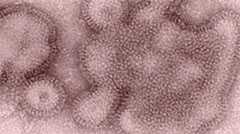Influenza A (H3N2) Variant Virus
Influenza viruses that normally circulate in pigs are called “variant” viruses when they are found in people. Influenza A H3N2 variant viruses (also known as “H3N2v” viruses) with the matrix (M) gene from the 2009 H1N1 pandemic virus were first detected in people in July 2011. The viruses were first identified in U.S. pigs in 2010. During 2011, 12 human infections with H3N2v were detected. During 2012, there were multiple outbreaks of H3N2v resulting in 309 reported cases. Sporadic infections with H3N2v have continued to be detected since that time. Infections with H3N2v have mostly been associated with prolonged exposure to pigs at agricultural fairs. Limited human-to-human spread of this virus has been detected in the past as well but no sustained or community spread of H3N2v has been identified at this time. It’s possible that sporadic infections and even localized outbreaks among people with this virus will continue to occur. The Centers for Disease Control and Prevention (CDC) continues to monitor this situation closely and will report cases of H3N2v and other variant influenza viruses weekly in FluView and on the case count tables on this website.
See Past Updates »
Preventive Actions
CDC Recommendations For People At High Risk:
- If you are at high risk of serious flu complications and are going to a fair where pigs will be present, avoid pigs and swine barns at the fair. This includes children younger than 5 years, people 65 years and older, pregnant women, and people with certain long-term health conditions (like asthma, diabetes, heart disease, weakened immune systems, and neurological or neurodevelopmental conditions).
If you are not at high risk, take these precautions:
- Don’t take food or drink into pig areas; don’t eat, drink or put anything in your mouth in pig areas.
- Don’t take toys, pacifiers, cups, baby bottles, strollers, or similar items into pig areas.
- Wash your hands often with soap and running water before and after exposure to pigs. If soap and water are not available, use an alcohol-based hand rub.
- Avoid close contact with pigs that look or act ill.
- Take protective measures if you must come in contact with pigs that are known or suspected to be sick. This includes wearing personal protective equipment like protective clothing, gloves and masks that cover your mouth and nose when contact is required.
- To further reduce the risk of infection, minimize contact with pigs in the pig barn and arenas.

Outbreak Characterization
- Localized outbreaks
- Swine-to-human transmission; rare, limited human-to-human
- No sustained or community transmission
Info for Specific Audiences
What's New
- Weekly U.S. Influenza Surveillance Report Friday, October 13, 2017
- National Press Conference Kicks Off 2017-2018 Flu Vaccination Campaign Thursday, September 28, 2017
- Recommended composition of influenza virus vaccines for use in the 2018 southern hemisphere influenza season Thursday, September 28, 2017
- Flu Fighters Thursday, September 28, 2017
- Page last reviewed: September 12, 2016
- Page last updated: September 12, 2016
- Content source:
- Centers for Disease Control and Prevention, National Center for Immunization and Respiratory Diseases (NCIRD)
- Page maintained by: Office of the Associate Director for Communication, Digital Media Branch, Division of Public Affairs


 ShareCompartir
ShareCompartir